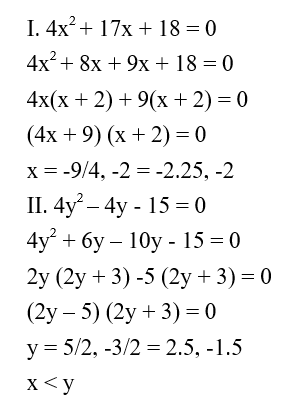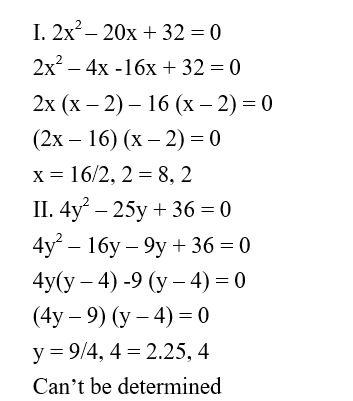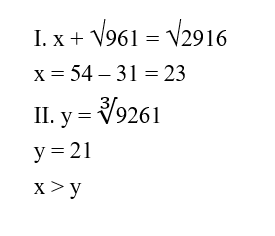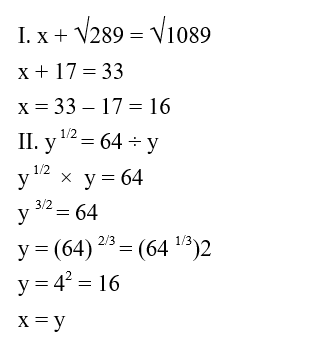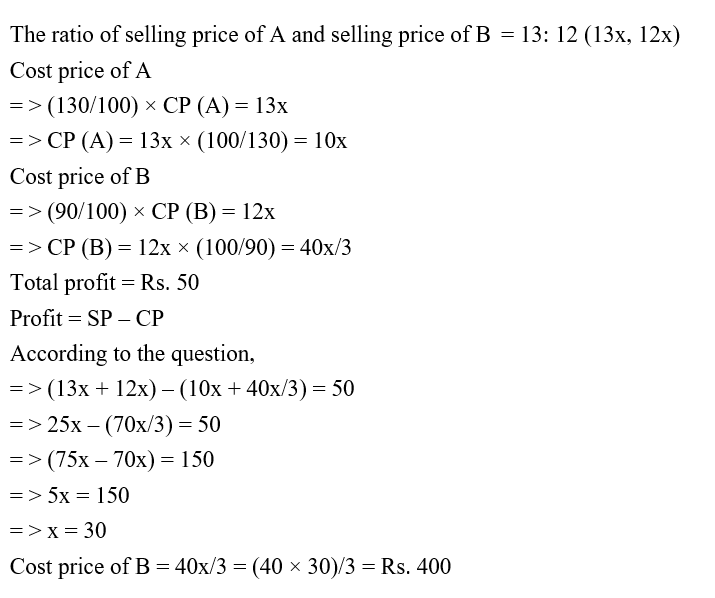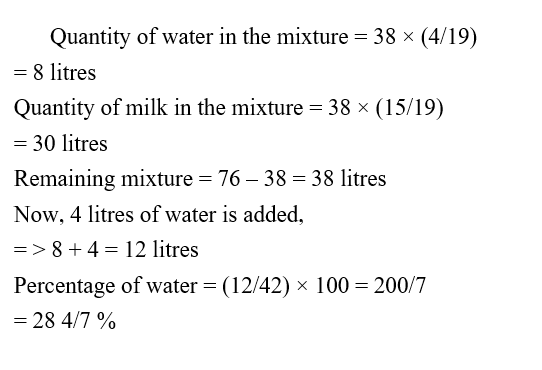Question 1: 
Question 2: 
Question 3: 
Question 4: 
Question 5: 
Question 6:
8 years ago, Raji’s age is equal to the sum of the Present ages of her son and daughter. Raji’s husband is 7 years elder to her. Raji’s husband’s present age is 4 times of his daughter’s present age. Find the Present age of Raji’s husband, if the present age of Raji’s son is 15 years?
8 साल पहले, राजी की उम्र उसके बेटे और बेटी की वर्तमान उम्र के योग के बराबर है। राजी का पति उससे 7 साल का बड़ा है। राजी के पति की वर्तमान उम्र उनकी बेटी की वर्तमान उम्र का 4 गुना है। यदि राजी के बेटे की वर्तमान उम्र 15 वर्ष है, तो राजी के पति की वर्तमान उम्र ज्ञात करें?
Question 7:
Two Stations A and B are 444 km apart. A train leaves station A from station B and at the same time another train leaves station B to A. Both the trains meet 6 hours after they start moving. If the train that starts from station A is 14 km/hr faster than the other one, then find the speed of fastest train?
दो स्टेशन A और B के बीच की दूरी 444 किमी हैं। एक ट्रेन स्टेशन A से स्टेशन B के लिए खुलती है और साथ ही एक अन्य ट्रेन स्टेशन B से A के लिए खुलती है। दोनों ट्रेनें चलने के 6 घंटे बाद मिलती हैं। यदि स्टेशन A से शुरू होने वाली ट्रेन दूसरे की तुलना में 14 किमी/घंटा तेज है, तो सबसे तेज़ ट्रेन की गति ज्ञात करें?
Question 8:
A is sold at 30 % of profit and B is sold at 10 % loss. The total profit is Rs. 50. The ratio of selling price of A and selling price of B is 13: 12. Find the cost price of B?
A 30% लाभ पर बेचता है और B 10% हानि पर बेचता है। कुल लाभ 50 रुपये है। A के विक्रय मूल्य और B के विक्रय मूल्य का अनुपात 13:12 है। B का लागत मूल्य ज्ञात करें?
Question 9:
A jar contains 76 litres of mixture of milk and water in the ratio of 15 : 4. 38 litres of mixture is taken out and 4 litres of water is added to the jar. What is the percentage of water in the mixture?
एक जार में 15: 4. के अनुपात में दूध और पानी के 76 लीटर मिश्रण हैं। 38 लीटर मिश्रण निकाला जाता है और जार में 4 लीटर पानी जोड़ा जाता है। मिश्रण में पानी का प्रतिशत क्या है?
Question 10:
A boat can cover 12 km upstream in 24 minutes. If the speed of the current is 1/4th of the boat in still water, then how much distance (in km) can the boat cover downstream in 36 minutes?
एक नाव 24 मिनट में 12 किमी ऊर्ध्वप्रवाह तय कर सकती है। यदि धारा की गति स्थिर पानी में नाव की गति का एक-चौथाई है, तो 36 मिनट में नाव कितनी दूरी (किमी में) अनुप्रवाह में तय कर सकती है?

